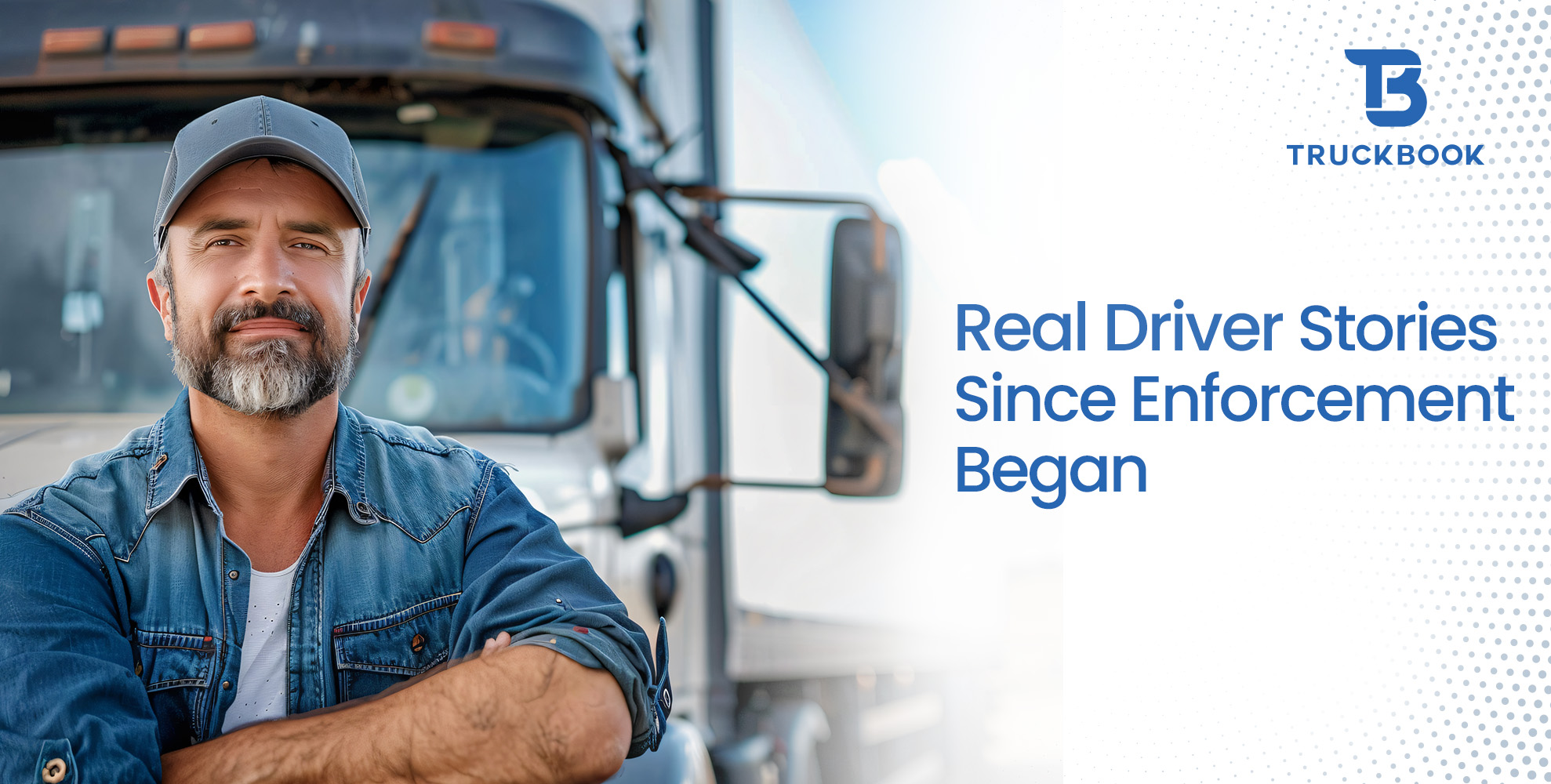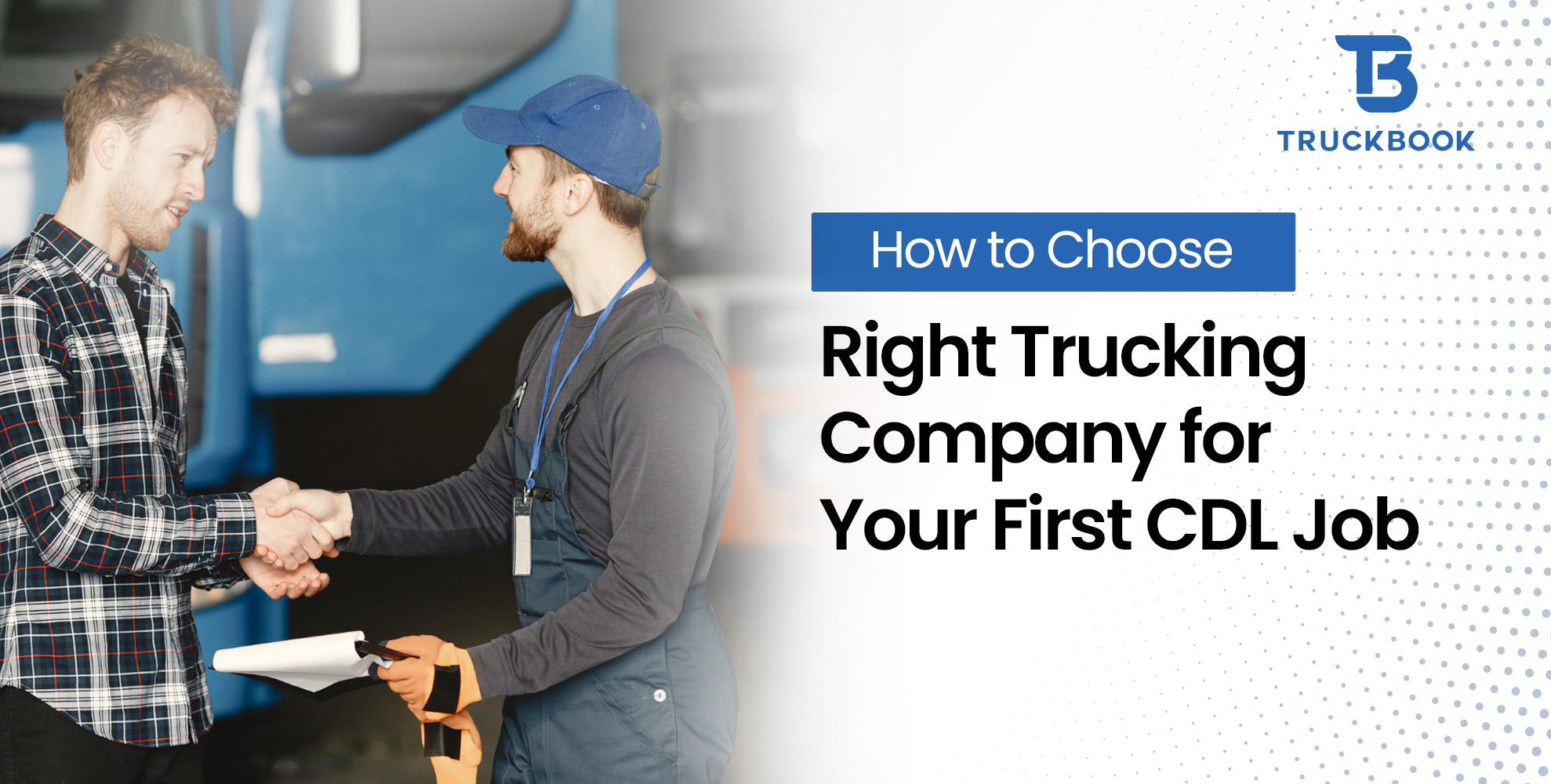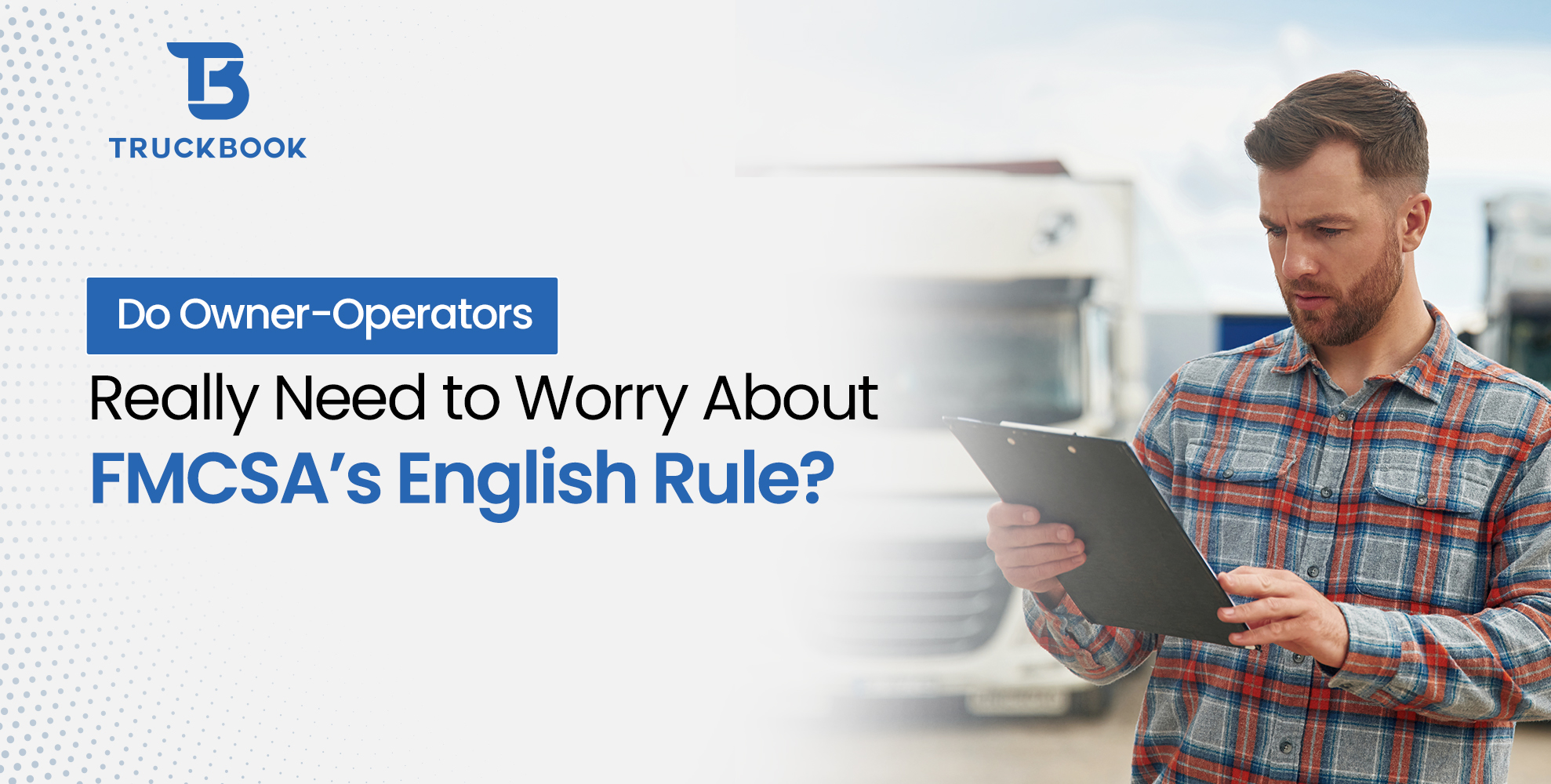Do you often wonder how you can maintain trucking compliance to ensure your business can
comply with security standards, regulatory policies, and other industry Regulations?
Regulations impacting the trucking industry can be complicated, but when the right processes and procedures are in place, compliance doesn’t have to be a continual point of worry. In fact, if you adhere to best practices and maintain constant management, your trucking business can run smoothly.
With your busy and often stressful schedule, it’s possible that you might not be able to spare time to stay on top of regulations to avoid costly fines and penalties.
But the good thing is you need not to worry anymore…
Because we have conducted extensive research, to keep you updated with the new trucking laws that either are likely to be introduced in 2023 or are in the process of being phased in via prior legislation. And also how you can maintain compliance in the trucking industry in order to stay on top of regulations. Let’s start with the importance of compliance in the trucking industry.
Importance Of Compliance In The Trucking Industry
The Federal Motor Carrier Safety Administration or FMCSA is responsible for enforcing trucking laws and regulations across the USA, such as those governing the weight and size limits for various commercial vehicles, the maximum number of hours that truckers are permitted to travel each week, and the correct labeling and delivery of hazardous products.
Failure to comply with these industry regulations is usually considered an act of truck negligence, which can result in significant fines and legal consequences, especially when an infraction creates an accident.
Following trucking, compliance regulations are crucial for ensuring the safety of everyone on the road. By maintaining trucks properly, training drivers, and following safety regulations, you can ensure that your freight movement is not only efficient but safe as well. So, whether you’re a trucking company owner or driver, remember that safety should always be the top priority when it comes to trucking.
Regulations That Trucking Companies Need To Comply With In 2023
Many trucking regulations are enforced by FMCSA to reduce crashes, injuries, and fatalities involving large trucks. FMCSA is the lead federal government agency responsible for regulating and providing safety oversight of commercial motor vehicles (CMVs), that balance trucking company safety with efficiency. Hence it is important that you must comply with key trucking regulations.
1. Hours of Service (HOS) Regulations:
These regulations specify the number of hours that a truck driver can work in a day and week, as well as the required amount of rest and break time. These regulations are designed to prevent driver fatigue, which is a leading cause of accidents on the road.
2. Commercial Driver’s License (CDL) Requirements:
The CDL requirements specify the training and licensing requirements for drivers of commercial vehicles, including trucks. CDL requirements ensure that drivers are properly trained and qualified to operate large vehicles safely.
3. Electronic Logging Device (ELD) Mandate:
The ELD mandate requires that all commercial drivers use an electronic logging device to track their HOS and driving time. This helps to ensure that drivers are complying with HOS regulations and staying within safe driving limits.
4. Vehicle Maintenance and Safety Regulations:
These regulations require that commercial trucks be regularly inspected and maintained to ensure that they are safe to operate on the road. This includes regular inspections of brakes, tires, and other critical systems.
5. Hazardous Materials Regulations:
If a trucking company transports hazardous materials, it must comply with regulations that specify how these materials are handled and transported safely. These regulations are designed to prevent accidents and protect the public from exposure to hazardous materials.
Overview Of Trucking Regulations And The Agencies Responsible For Enforcing Them
In the United States, the primary federal agency responsible for enforcing trucking regulations is the Federal Motor Carrier Safety Administration (FMCSA). The FMCSA is responsible for developing and enforcing regulations related to commercial motor vehicles, including trucks and buses, operating in interstate commerce.
Some of the key regulations enforced by the FMCSA as we mentioned above include Hours of Service (HOS) regulations, which limit the number of hours a driver can operate a commercial vehicle without taking a break, and the Electronic Logging Device (ELD) mandate, which requires drivers to use an electronic device to record their driving time and compliance with HOS regulations.
Other federal agencies involved in trucking regulation include the Environmental Protection Agency (EPA), which sets emissions standards for commercial vehicles, and the Department of Transportation (DOT), which oversees the safe transportation of hazardous materials.
In addition to federal regulations, each state has its own set of regulations governing the trucking industry. These regulations can cover a range of issues, including vehicle size and weight limits, speed limits, and licensing requirements.
State agencies responsible for enforcing trucking regulations vary from state to state, but typically include departments of transportation or state police agencies. These agencies work closely with federal agencies like the FMCSA to ensure compliance with regulations and promote safe trucking practices.
Regulations May Differ Depending On Whether A Company Engages In Interstate or Intrastate Commerce
Trucking regulations in the United States can vary depending on whether a company engages in interstate or intrastate commerce. Interstate commerce involves the transportation of goods or passengers across state lines, while intrastate commerce involves the transportation of goods or passengers within a single state.
Companies engaged in interstate commerce are subject to federal regulations administered by the Federal Motor Carrier Safety Administration (FMCSA), which sets standards for the safe operation of commercial motor vehicles, including trucks and buses. These regulations include Hours of Service (HOS) requirements, vehicle size, and weight limits, and mandatory drug and alcohol testing for drivers.
In contrast, companies engaged in intrastate commerce are subject to regulations set by individual states. While many states have adopted regulations that mirror federal requirements, there may be some variations in state regulations. For example, some states may have more stringent HOS regulations or weight limits for commercial vehicles than federal regulations.
In addition, companies engaged in intrastate commerce may be subject to additional state-specific requirements, such as registration and licensing fees or special equipment requirements for vehicles operating within state borders.
Trucking companies need to understand the specific regulations that apply to their operations, whether they are engaged in interstate or intrastate commerce, to ensure compliance and avoid penalties or fines for noncompliance.
Consequences Of Non-Compliance With Trucking Regulations
Non-compliance with trucking regulations can have serious consequences for both trucking companies and their drivers. Here are some of the potential consequences of non-compliance that ensure that you are operating in accordance with all applicable regulations.
1. Fines and Penalties:
Non-compliance with trucking regulations can result in fines and penalties from federal and state agencies responsible for enforcing these regulations. The fines can range from hundreds to thousands of dollars per violation.
2. Legal Liability:
If a trucking company or driver is found to be non-compliant with regulations and is involved in an accident, they may be held legally liable for any injuries or damages that occur as a result of the accident. This can result in significant legal and financial consequences.
3. Loss of Reputation:
Non-compliance with trucking regulations can damage a company’s reputation and make it more difficult to attract and retain customers. A history of non-compliance can also negatively impact a company’s ability to secure insurance coverage and financing.
4. Driver Disqualification:
If a driver is found to be non-compliant with regulations, they may face disqualification from operating a commercial vehicle. This can result in the loss of their job and difficulty finding future employment in the trucking industry.
5. Suspension or Revocation of Operating Authority:
A trucking company may have its operating authority suspended or revoked if it is found to be consistently non-compliant with regulations. This can result in the loss of the company’s ability to conduct business and can be difficult to recover from.
Best Practices for Staying Compliant
A. Regular Training And Education Of Employees On Regulations And Compliance Best Practices
Regular training and education of employees on regulations and compliance are essential for maintaining a culture of safety and compliance in the trucking industry. Here are some best practices for training and educating employees on regulations and compliance:
1. Provide Comprehensive Training:
Ensure that all employees receive comprehensive training on all applicable regulations and compliance requirements. This training should cover topics such as Hours of Service (HOS) regulations, vehicle maintenance requirements, and driver safety practices.
2. Stay Up-to-Date:
Regulations and compliance requirements can change over time. It is important to stay up-to-date on any changes to regulations and ensure that employees receive updated training and education accordingly.
3. Utilize Multiple Training Methods:
People learn in different ways, so it’s essential to use a variety of training methods to ensure that all employees receive the information they need. Consider using online training, classroom training, on-the-job training, and written materials to provide a well-rounded education.
4. Reinforce Training Regularly:
Regularly reinforcing training and education can help ensure that employees retain important information and remain compliant with regulations. Consider conducting refresher training sessions on a regular basis.
5. Encourage a Culture of Compliance:
Establish a culture of compliance by communicating the importance of regulations and compliance to all employees. Encourage employees to report any potential violations or safety concerns and make it clear that compliance is a top priority for the organization.
6. Provide Incentives for Compliance:
Consider providing incentives for employees who maintain a high level of compliance with regulations. This can help reinforce the importance of compliance and encourage employees to take it seriously.
B. Use Of Technology To Monitor And Manage Compliance
In the USA trucking industry, compliance management is a critical aspect that ensures safety, efficiency, and adherence to legal regulations. Technology plays an increasingly vital role in compliance management, with electronic logging devices (ELDs) and GPS tracking systems being key examples.
ELDs automation helps companies to record data on drivers’ Hours of Service (HOS) to ensure compliance with legal regulations regarding rest periods and driving times. The use of ELDs reduces the risk of drivers exceeding HOS limits and ensures that companies remain compliant with industry standards and regulations.
GPS tracking systems allow companies to monitor their vehicles’ movements and driver behavior in real time, enabling them to identify any potential safety risks and address them promptly. GPS tracking also helps to optimize routes, reduce fuel consumption, and ensure timely deliveries.
By utilizing ELDs and GPS tracking systems, trucking companies can improve safety, efficiency, and compliance with legal regulations.
C. Proper Maintenance Of Equipment To Ensure Safety And Compliance
Proper equipment maintenance is essential for the owner-operators and trucking companies to ensure that trucks operate safely, efficiently, and effectively. Regularly performing vehicle inspections, keeping accurate maintenance records, and conducting regular repairs and replacements are critical components of equipment maintenance.
Performing regular inspections, such as pre-trip inspections, helps identify any potential safety issues before they become major problems. Inspections can also identify any worn or damaged parts that need repair or replacement to prevent breakdowns and ensure the truck operates at optimal efficiency.
Keeping accurate maintenance records is crucial to track the truck’s performance, identify recurring problems, and schedule routine maintenance. Maintenance records also provide a legal record of compliance with safety regulations and manufacturer guidelines.
Regular repairs and replacements are necessary to ensure that the truck operates safely and effectively. Worn or damaged parts can compromise the truck’s safety and efficiency, resulting in potential breakdowns and costly repairs.
D. Documentation And Record-Keeping Best Practices to Demonstrate Compliance
To demonstrate compliance with regulatory requirements and industry standards. Properly documenting driver logs, vehicle maintenance, and safety inspections are critical components of maintaining accurate records and documentation is very important to demonstrate compliance.
Accurate driver logs, Properly documented driver logs provide evidence that drivers are adhering to these regulations, ensuring safety on the road, and avoiding costly fines and penalties.
Accurate records of maintenance and inspections provide evidence that the truck has been adequately maintained and is in compliance with safety regulations. These records also help identify potential safety issues, allowing for proactive measures to address any concerns before they become major problems.
Maintaining accurate records and documentation also helps protect against legal liabilities. In the event of an accident, these records provide evidence that the trucking company has taken appropriate measures to ensure safety compliance and that drivers have adhered to industry regulations.
Common Compliance Mistakes to Avoid
A. Failure To Properly Maintain Equipment And Perform Safety Inspections
Failing to properly maintain equipment and perform regular safety inspections in the trucking industry can have severe consequences. The consequences of non-compliance include:
1. Fines and Penalties:
FMCSA has the authority to impose fines and penalties on drivers and companies that fail to comply with safety regulations. These fines can be costly and can affect a company’s reputation.

Close up of a driver holding printed day shift in focus together with drivers licence and digital tachograph card
2. Legal Action:
In the event of an accident, companies and drivers may face legal action if it is found that they failed to properly maintain equipment or conduct safety inspections. This can result in costly lawsuits and damages.
3. Loss of Business:
Non-compliance can result in a loss of business as customers may choose to work with compliant companies that prioritize safety and regulatory compliance.
4. Driver Disqualification:
If a driver is found to be non-compliant with safety regulations, their commercial driver’s license (CDL) may be suspended or revoked, resulting in a loss of employment.
5. Negative Publicity:
Non-compliance can result in negative publicity, which can affect a company’s reputation and lead to a loss of business.
B. Neglecting To Properly Train And Educate Employees On Regulations And Compliance
Regularly training and educating employees on regulations and compliance best practices is crucial in the trucking industry for several reasons:
1. Safety:
Trucking is a high-risk industry, and accidents can have serious consequences, such as injuries, fatalities, property damage, and legal liabilities. Educating employees on safety regulations and best practices can help prevent accidents and promote a culture of safety.
2. Compliance:
The trucking industry is heavily regulated, and non-compliance can result in fines, penalties, license suspensions, and legal actions. Regular training and education can help employees understand their legal obligations and avoid violations.
3. Efficiency:
Compliance and safety go hand in hand. Educating employees on compliance best practices can also help them become more efficient in their work, reducing the risk of delays, downtime, and extra costs.
4. Reputation:
A company’s reputation can suffer if it is involved in accidents, legal actions, or non-compliance issues. Regular training and education can help employees maintain a good reputation by demonstrating a commitment to safety, compliance, and professionalism.
5. Employee Morale:
Investing in employee training and education can also boost morale, job satisfaction, and retention. Employees who feel valued and supported are more likely to be productive, engaged, and loyal to their company.
C. Failure To Keep Accurate Records And Documentation
Maintaining accurate records and documentation is a critical aspect of compliance in the trucking industry. Failure to do so can result in fines, penalties, and legal action for several reasons:
1. Regulatory compliance:
The trucking industry is heavily regulated, and trucking companies are required to maintain records and documentation to demonstrate compliance with various regulations, such as driver logs, vehicle maintenance records, and trip records.
2. Safety compliance:
Accurate records and documentation are also essential for maintaining safety compliance. For example, driver logs are used to ensure that drivers are getting enough rest and not driving while fatigued. Failure to maintain accurate driver logs can not only result in fines and penalties, but also result legal action can be taken in the event of an accident.

3. Legal compliance:
Accurate records and documentation are also critical for legal compliance. For example, contracts, bills of lading, and shipping records are used to establish liability and ownership in the event of a dispute. Failure to maintain accurate records can result in legal action, such as breach of contract claims, or even criminal charges, such as fraud.
4. Financial compliance:
Accurate records and documentation are also essential for financial compliance, such as tax reporting, payroll records, and insurance records. Failure to maintain accurate records can result in fines, penalties, and legal action from regulatory agencies, as well as audits and investigations by tax authorities and insurance companies.
Conclusion
There are positives and negatives associated with trucking compliance and regulation.
The key here is to maintain compliance in the trucking industry for promoting safety, efficiency, and legal compliance.
Staying on top of regulations requires a commitment to ongoing education and training for employees, regular maintenance and inspection of vehicles, accurate record-keeping and documentation, and a proactive approach to addressing potential issues before they become problems.
By implementing these best practices, trucking companies can not only avoid fines, penalties, and legal action but also improve their reputation, increase customer satisfaction, and achieve long-term success in a highly competitive industry. Ultimately, the key to maintaining compliance in the trucking industry is to prioritize safety, stay informed about regulatory changes, and foster a culture of accountability and professionalism throughout the organization.








